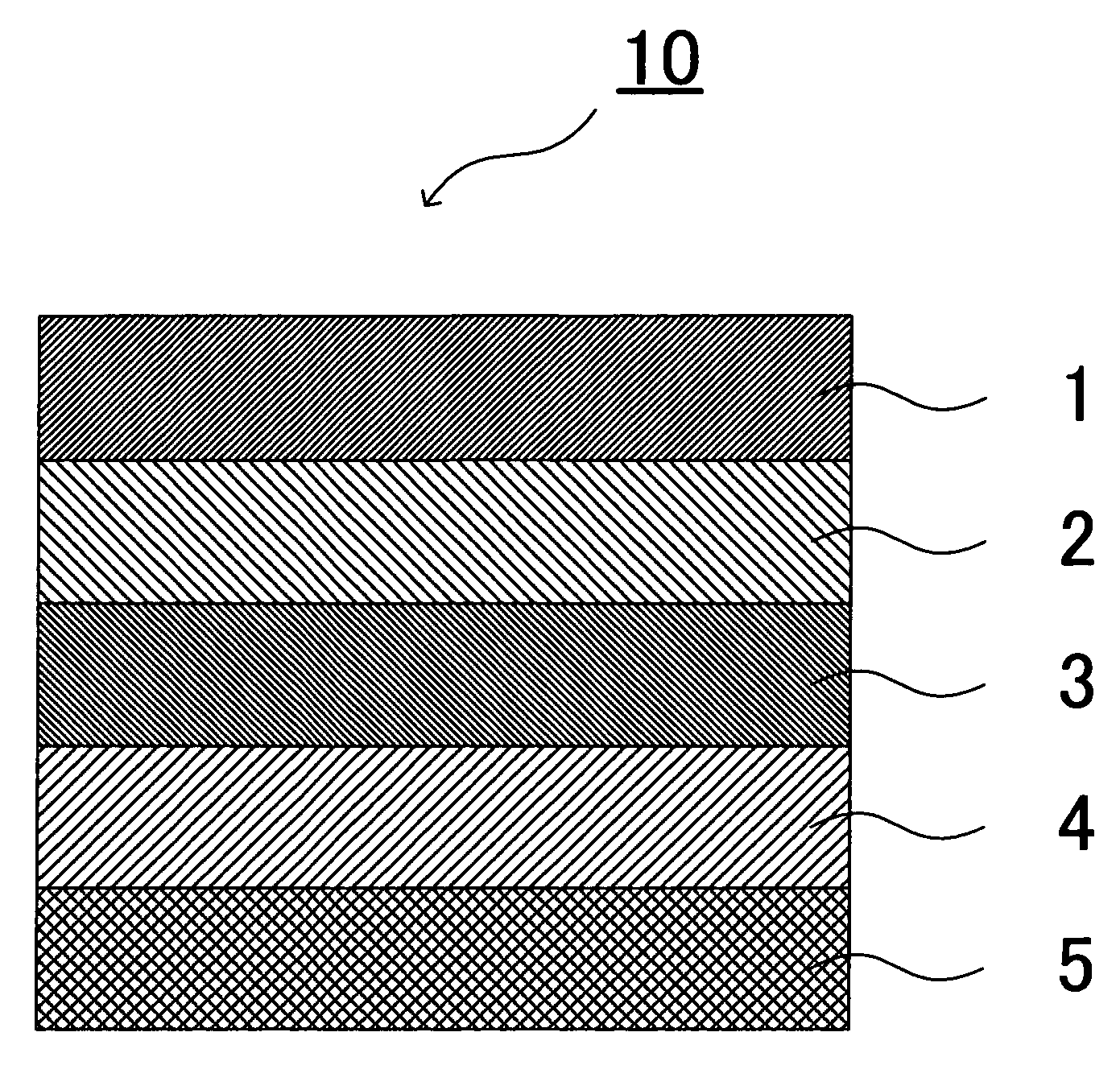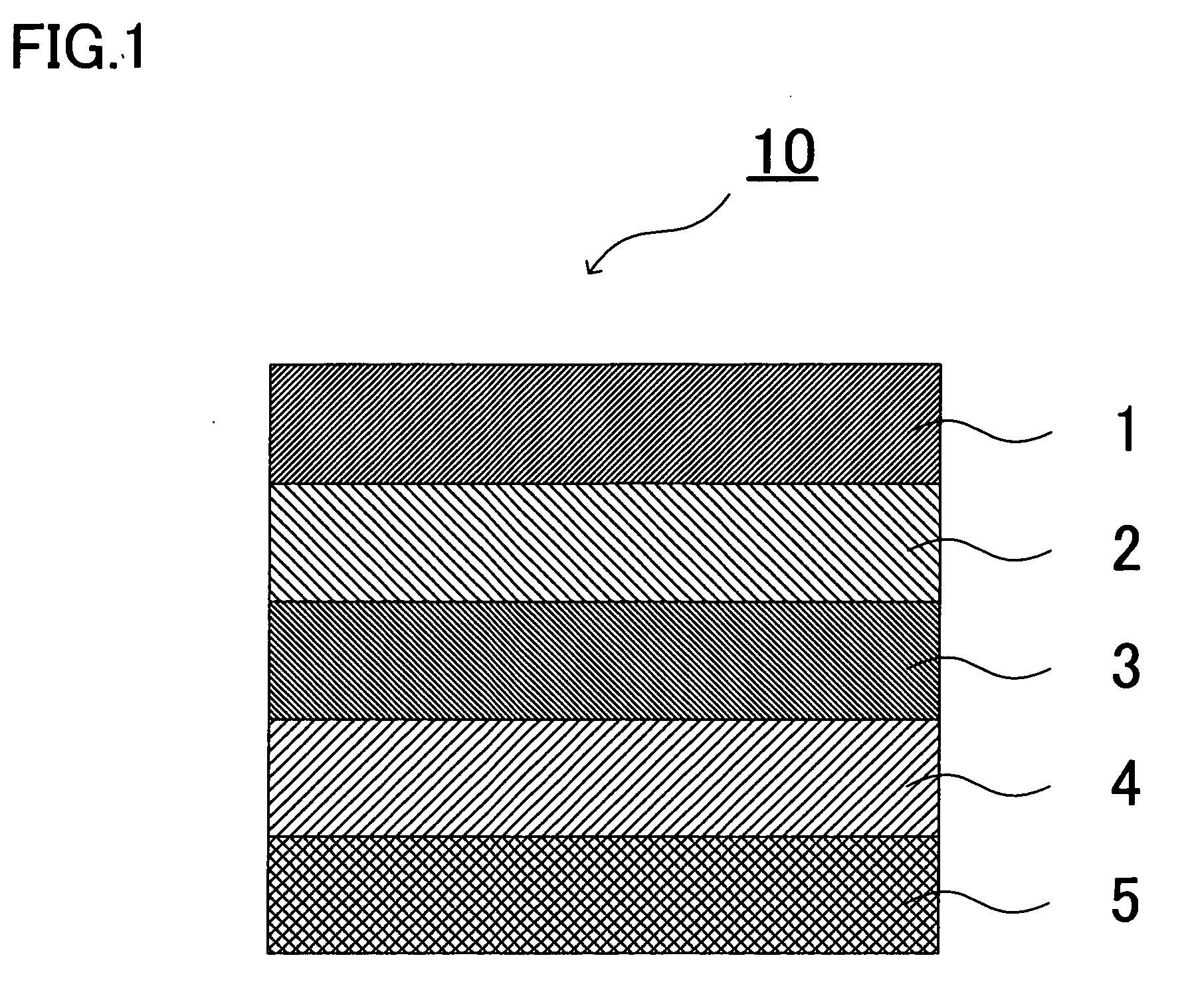Filler sheet for solar cell module, and solar cell module using the same
- Summary
- Abstract
- Description
- Claims
- Application Information
AI Technical Summary
Benefits of technology
Problems solved by technology
Method used
Image
Examples
example 1
(1) Production of a Filler Sheet (A)
[0155] Three parts by weight of vinyltrimethoxysilane and 0.1 part by weight of a free radical generator (t-butyl-peroxyisobutyrate) were mixed with 100 parts by weight of linear low density polyethylene, and the polyethylene was graft-polymerized at an extrusion temperature of 200° C. to prepare a silane-modified linear low density polyethylene having a silane modification ratio of 2%. With 85 parts by weight of the resultant polyethylene were mixed 2.5 parts by weight of a hindered amine type light stabilizer, 7.5 parts by weight of a benzophenone type ultraviolet absorbent and 5 parts by weight of a phosphorus type thermal stabilizer, and then the mixture was melted and worked into a master batch.
[0156] To 100 parts by weight of the silane-modified linear low density polyethylene were added 3 parts by weight of the master batch, and then a film-forming machine having an extruder 25 mm in diameter and a T die 300 mm in width was used to form ...
example 2
[0160] A filler sheet according to the invention and a solar cell module used were produced in the very same way as in Example 1 except that 0.15 part by weight of vinyltrimethoxysilane was used and the silane modification ratio was set to 0.1%.
[0161] The production state of the film, the external appearance, the transmittance to all rays, and the peel strength after the film was allowed to stand in a state of a high-temperature of 85° C. and a high-humidity of 85% for 1000 hours were the same as in Example 1.
[0162] The solar cell module produced by use of the film was allowed to stand in a state of a high-temperature of 85° C. and a high-humidity of 85% for 1000 hours, and after this the external appearance and the lowering of the electromotive force were the same as in Example 1. Even after the module was subjected to a sunshine weatherometer test (sunshine carbon arc lamp illuminance: 255 W / m2, temperature: 60° C., and humidity: 60%) for 500 hours, the external appearance there...
example 3
[0163] Ten parts by weight of the hindered amine type light stabilizer, 10 parts by weight of the benzophenone type ultraviolet absorbent and 10 parts by weight of the phosphorus type thermal stabilizer were mixed with 70 parts by weight of a silane modified linear low density polyethylene having a silane modification ratio of 4%, produced in the very same way as in Example 1 except that 6 parts by weight of vinyltrimethoxysilane was used, and then the mixture was melted and worked into a master batch.
[0164] In the same way as in Example 1 except that to 100 parts by weight of the silane-modified linear low density polyethylene were added 26 parts by weight of the master batch, a film 400 μm in thickness was formed.
[0165] The production state of the film, the external appearance, the transmittance to all rays, and the peel strength after the film was allowed to stand in a state of a high-temperature of 85° C. and a high-humidity of 85% for 1000 hours were the same as in Example 1....
PUM
| Property | Measurement | Unit |
|---|---|---|
| Fraction | aaaaa | aaaaa |
| Percent by mass | aaaaa | aaaaa |
| Percent by mass | aaaaa | aaaaa |
Abstract
Description
Claims
Application Information
 Login to View More
Login to View More - R&D
- Intellectual Property
- Life Sciences
- Materials
- Tech Scout
- Unparalleled Data Quality
- Higher Quality Content
- 60% Fewer Hallucinations
Browse by: Latest US Patents, China's latest patents, Technical Efficacy Thesaurus, Application Domain, Technology Topic, Popular Technical Reports.
© 2025 PatSnap. All rights reserved.Legal|Privacy policy|Modern Slavery Act Transparency Statement|Sitemap|About US| Contact US: help@patsnap.com


